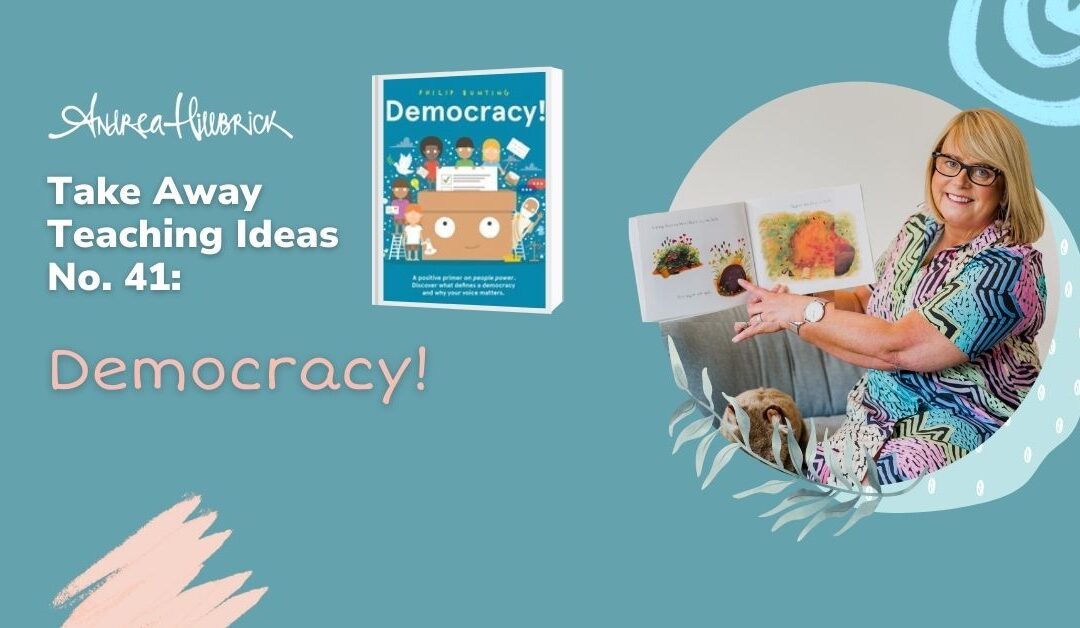Democracy!
By: Philip Bunting
Published: 2023
Publisher: Hardie Grant Children’s Publishing
Democracy! is full of fascinating and engaging information about democracy and provides young readers with easily digestible information about the importance of their voice. It is filled with handy tips on how to engage in community discussions, from petitions to peaceful protests, and explains the history of democracy in a funny and positive way.
15 Learning experiences ready to go!
- Activate prior knowledge by sharing the end papers what do the images make you think about? What is familiar to you?
- Activate prior knowledge by taking a virtual tour of Parliament House
- Invite the learners to come dressed as a Prime Minister.
- Vote on classroom decisions.
- Create a glossary throughout the exploration of the book.
- Create a word splash for the most important words from the book. Persuade your buddy about the significance.
- Follow the instructions in the text to create your own protest sign.
- Philip used a cake to share his understanding of the terms- National, state, and local government. What image could you use to demonstrate your understandings?
- Use thinking stems to discuss the text:
- This reminds me of…
- This is like…
- Another text like this is…
- I wonder if…
- I really like how the author, Philip…
- I got confused when…
- I’m not sure what that word means…
- I think this is mainly about…
- The important idea is…
- The most important thing I have learnt so far is…
- At first, I thought... but now I am thinking…
- I wonder…
- How come…
- I agree with ... because…
- I disagree with…because…
- Something new for me is…
- Speed Teach – different readers read and summarise each double page to speed teach the rest of the class.
- Stick Debates: Implement stick and peg debates in your classroom as a part of the planning of the persuasive text. The learners have three icy pole sticks and can express three arguments to support their point of view. When there are no sticks left the debate/discussion stops.
- Explore current issues using a range of sources:
- Explore the text features of Philip’s book to transfer to your own writing:
- Headings
- Sub-headings
- Quantity of text
- Images/diagrams matching text.
- Numbers
- Question Key – the learners develop questions for the answer of democracy.
- Revisit the end papers of Philip’s book. Create end papers using this style to match your own writing.
Enjoy the rich discussions launched by this highly informative text!
Andrea


Recent Comments